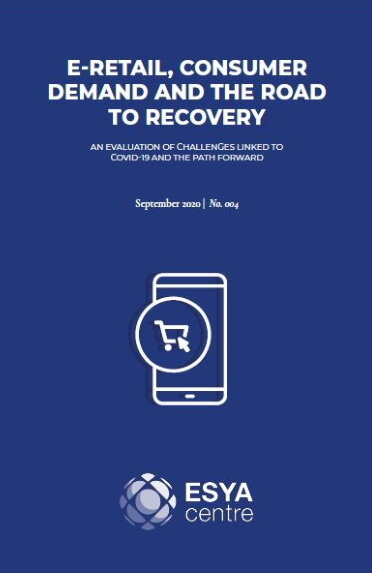I. Demand and E-Retail
The Covid-19 pandemic and ensuing emergency responses across the world are expected to affect firms through supply chain disruptions in the short run and demand declines in the longer run. Given the high share of Micro, Small and Medium Enterprises (MSMEs) as well as the low income of households in India, the country is at risk of a protracted economic downturn, especially given the steady decline in GDP growth.
India needs a two-pronged approach to generate aggregate demand. First, to bring jobs and income back to poorer households, especially for the rural population. Second, to facilitate spending by households who have the willingness and capacity to pay, primarily in and around urban areas. This can be done by facilitating e-retail, which has been a preferred channel during this period. With the element of experience removed from physical shopping, we see a shift in the playing field between online retail and physical stores. E-retail is also more capable of complying with evolving government regulations such as distancing norms, making it both a safe and competitively priced channel to help meet consumer demand.
E-retail regulation in India has a chequered past. For instance, the Government of India’s Draft e-Commerce Policy, which envisions e-retail as a segment within e-commerce, looks to regulate aspects ranging from data and digital infrastructure development to export promotion. It is essential that any future policy on e-commerce should support and incentivise technology adoption and sectoral transitions, such as from offline to e-retail.
II. Restrictions on E-Retail during the Lockdown
A survey of more than 2,000 online sellers conducted between April 27 and May 4 indicates the need for a facilitative policy direction. We find that most firms selling online prefer this channel to offline selling, but faced problems primarily of supply and demand during the lockdown period. A shortage of manpower was another important factor in this period, especially for firms that were previously operating at a larger scale.
Policy also played a role in hindering the operation of e-retail during the lockdown. A great deal of confusion was caused by unclear phrases and terms, for instance the definition of ‘essential goods’ was left unclear. There was further a degree of inconsistency and differentiation in policy formulation. The adoption of differing standards for online and offline retail during the pandemic, despite the benefits of e-retail such as contactless delivery, is of particular concern.
The lockdown had a substantial impact on retailer supply chains, both online and offline. The initial impact seems to have derived from the lockdown’s sudden nature, and the resulting administrative confusion regarding passes, curfews, and freedom of movement. Businesses operating in multiple states or districts faced a significant challenge in obtaining the necessary permissions for their staff. Later in the lockdown they faced a shortage of labour as several migrant workers had shifted back to their villages or towns.
III. Road to Recovery
Actions by state governments will play a critical role in determining how well small retailers are able to recover. A rapid recovery will require cohesion and collaboration between governments at centre and state. With this in mind a five-step recovery process is suggested in our report.
The first steps are aimed at building trust and confidence in the policy-making process. We suggest that governments at various levels engage with different stakeholders to understand their concerns. Authorities should frame rules on the basis of feedback obtained in such consultation, and the principles of non-discrimination and non-arbitrariness. This will facilitate a level playing field that allows retail market participants to leverage their strengths and explore synergies between the digital and traditional channels.
Authorities must also review the crisis management playbook, including the legislative framework, keeping in mind lessons from the pandemic. A framework governing e-retail, or e-commerce more broadly, can take inspiration from the sectoral development bodies in Malaysia and Singapore, which have enabled local businesses to scale and compete globally.
Attribution: Dr. Megha Patnaik and Mohit Chawdhry. “E-Retail, Consumer Demand and the Road to Recovery,” Report No. 004, September 2020, Esya Centre.

